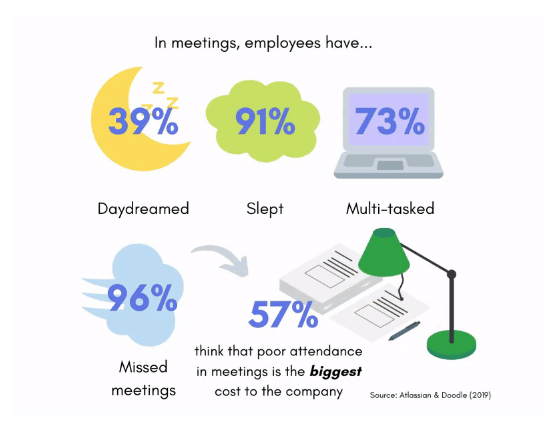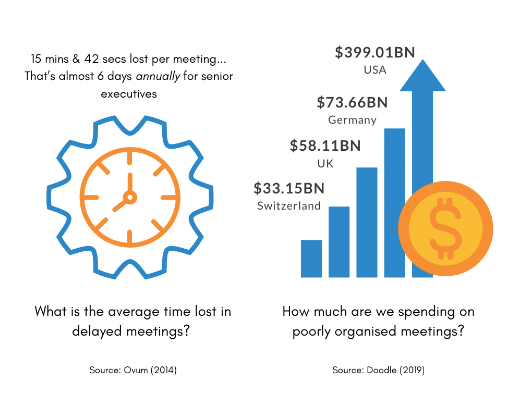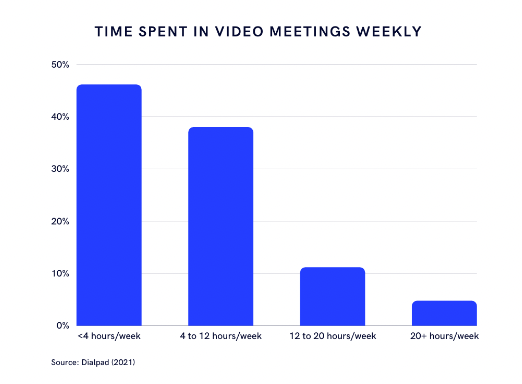The cost of too many meetings
This blog aims to help you cut back on unnecessary meetings and keep up with missed sessions. We spoke to our users and they shared practices that have helped them.

According to a study, most employees attend 62 meetings per month, and roughly half of those could have been avoided and not the best use of their time. Can we improve our processes to increase our teams' collective productivity and well-being?
This blog aims to help you cut back on unnecessary meetings and keep up with missed sessions. But first, let’s analyze the cost of too many meetings.
Downsides of too many meetings
While certain meetings are critical and can benefit our everyday work, having too many can stifle our productivity. We spoke to our users and their motivation behind asynchronous communication. Here is what we learned about why they cut back on too many meetings.
1. Kills productivity
Your team needs uninterrupted hours to do focused work and be productive. Every minute spent in a counterproductive meeting reduces the time available for their work, which is critical for creativity and efficiency. Having frequent meetings leads to fragmented work sessions and disrupts the state of deep work. As a result, it impacts your team’s ability to focus.
2. Lack of focus leads to wasted efforts
In a survey by Otter.ai, 49% of employees admitted that they do unrelated work during meetings rather than pay attention to the discussion, and 69% of employees multitask. Being mindful of what to avoid can be critical to your team's productivity; this is not to say that people miss out on the essential parts of a session. You can always make these meeting recordings easily accessible to your team to watch at their convenience.

3. Increased Costs
The time spent on meetings should ideally translate to direct value created. Meetings can easily be termed as the most expensive form of communication. Unnecessary meeting increases your business cost. Ineffective meetings make professionals lose 31 hours every month, adding up to 4 working days!

4. Reduces flexibility
We have discovered new ways to work together better, and a large part of that includes better documentation and asynchronous communication. The wide adoption of asynchronous communication has led to the growing popularity of flexible times and ways of working individually and as a team. Having regular meetings is the antithesis of flexibility.

How to stop having too many meetings and the benefits
If you are looking for ways to boost team efficiency, meeting optimization is a great place to start, and here are the top six ways to do it.
1. Always have a clear agenda
As per research by Doodle, 67% of managers believe agendas are crucial to successful meetings. Keeping the discussion focused and to the point helps participants stay focused and reduce time spent in the meeting. Additionally, if the agenda and topic are shared beforehand, participants can prepare relevant questions to improve the meeting outcome. Also, record the meeting.
2. Leverage meeting recordings
Most meetings don’t require everyone to be present. However, you'd like everyone, including those who were unable to attend, to know the highlights of the meeting. While you can always record a meeting and share it, this may not be the best way to discover and access it at a later point. Tools like Spiti solves for discoverability and easy access to your meeting recordings, thereby helping your team stay on track. Besides, if someone wants to revisit a specific point in the meeting, it's only a click away.
3. Adopt a recorded show and tell method
You can leverage videos even to reduce the number of meetings. For instance, introducing a new product might not even need a meeting where everyone is present. A video product demo can serve as a better alternative to giving a more comprehensive demo. You can consider making this easily accessible and enabling interactions to address later queries.
4. Switch to asynchronous communication
Asynchronous communication allows you to work as per your timelines. It introduces a certain level of flexibility. Rather than sitting through hours of meetings, teams can learn new things or catch up on missed meetings when they're ready. In addition, this strategy is beneficial to onboard new team members, especially when working remotely. At Spiti, we use an onboarding playlist on Spiti to start engaging with future hires even before they have joined our team.
5. Limit the number of attendees
According to a Harvard Business Review report, meetings with fewer attendees are more effective. People tend to be more engaged and interactive in such discussions. Regardless, record the meeting!
Make Your Meetings Better with Spiti
Meetings are necessary for collaboration, creativity, and brainstorming. They create partnerships and foster relationships. However, excessive meetings are counterproductive, causing more difficulties for teams and organizations.
If you want to get more out of your meetings, increase team productivity, and enhance employee performance, give Spiti a try. Spiti can help your team save time, cut down on ramp-up time, and create a thriving and collaborative remote work environment.
